Why does my Panasonic TC-26LX20 LCD TV say 'This type of card is not supported'?
- EEric LyonsAug 13, 2025
This message appears when an incompatible card is inserted. Please ensure that you are using a supported card type with your Panasonic LCD TV.
Why does my Panasonic TC-26LX20 LCD TV say 'This type of card is not supported'?
This message appears when an incompatible card is inserted. Please ensure that you are using a supported card type with your Panasonic LCD TV.
Why does my Panasonic LCD TV say 'This type of format is not supported'?
This message appears when the card is not formatted with FAT 12 or FAT 16, or if it is not DCF standard. Ensure your card meets these formatting requirements for compatibility with your Panasonic LCD TV.
What does it mean when my Panasonic TC-26LX20 says 'Photo Viewer cannot support over 3000 JPEG files'?
This message appears because the number of JPEG files exceeds the limit. The photo viewer on your Panasonic LCD TV cannot support over 3000 JPEG files. Reduce the number of images on the card.
What does it mean when my Panasonic TC-26LX20 LCD TV says 'Photo Viewer cannot support over 8192 x 8192 pixels'?
This message appears because the image resolution exceeds the supported limit. The photo viewer on your Panasonic LCD TV cannot support images over 8192 x 8192 pixels. Use images with a lower resolution.
Why does my Panasonic TC-26LX20 say 'This type of image is not supported'?
This message appears when the JPEG file is corrupted and cannot be decoded. Unfortunately, there is no suggested solution provided.
How to fix 'Cannot read the content of the card' error on my Panasonic TC-26LX20?
If you cannot read the content of the card on your Panasonic LCD TV, make sure it is formatted with FAT 12 or FAT 16, the file extension is 'JPG', and the folders are under DCF standard.
What to do if PC card cannot be ejected from my Panasonic TC-26LX20 LCD TV?
To eject the PC card from your Panasonic LCD TV, push the card all the way in, and then try ejecting it.
Why do pictures take a long time to display on my Panasonic TC-26LX20?
If pictures take a long time to display on your Panasonic LCD TV, it could be due to a large number of images or large file sizes.
Instructions for installing AA batteries into the remote control transmitter.
Guidance on optimal placement of the TV and wall-mounting options.
Instructions for adjusting the TV stand angle for optimal viewing.
Procedure for removing and refitting the back cable cover on the TV unit.
Details on connecting an external antenna using coaxial cable.
Steps to connect a cable TV set-top box for channel reception.
Guide to connecting external devices like DVD players and game consoles.
Overview of the TV's various input and output connection ports.
Instructions for connecting devices via HDMI for digital A/V signals.
Explanation of the primary buttons and functions on the TV remote control.
How to turn the TV on and off using the main unit and remote control.
Guide to changing picture aspect ratios (Normal, Just, Zoom, Full).
Details on supported memory cards and JPEG file requirements for Photo Viewer.
Important precautions for handling memory cards to prevent data loss or damage.
Step-by-step instructions for inserting and removing SD and PCMCIA memory cards.
How to navigate and view images in thumbnail mode and single picture display.
Customizing Photo Viewer settings like slide show interval, sequence, and rotation.
Using the zoom function and selecting between SD and PC cards.
Common issues and solutions for the Photo Viewer feature.
Guide to accessing and navigating the TV's main menu and submenus.
Details on adjusting picture settings (mode, backlight, color) and audio settings (bass, treble).
How to set the menu language and program TV channels.
Configuring parental controls (lock) and closed caption display options.
Instructions for displaying the channel menu and initiating automatic channel programming.
Procedure for manually adding or deleting channels from memory.
Setting up program locks, V-CHIP ratings, and parental control codes.
Options for viewing programs with NR signals and selecting rating levels.
Explanation of U.S. movie, U.S. TV, and Canadian rating systems for content.
How to enable and configure closed caption display, including CC ON MUTE.
Changing input labels to match connected devices for easier identification.
Accessing settings for video noise reduction, color matrix, and power saving.
In-depth guide to picture settings like mode, backlight, brightness, and color.
Fine-tuning picture quality with advanced options like edge transition and gamma.
Description of standard, cinema, vivid, and custom picture modes.
Detailed explanation of backlight, brightness, color, tint, sharpness, and AI picture adjustments.
Explanation of advanced settings such as edge transition and gray emphasis.
Guide to moving the picture up or down for optimal display.
Instructions for shrinking or widening the picture to manage black bars.
Configuring audio modes like Standard, Dynamic, and Auto for different inputs.
How to adjust bass, treble, balance, surround, and equalizer settings.
Selecting audio input type (Analog/Digital) for HDMI connections.
Procedure for programming the TV remote to control other manufacturers' devices.
List of infrared codes for various brands of VCRs, DVDs, and other equipment.
Specific codes for operating VCRs from different manufacturers using the TV remote.
Codes for operating DVD players and CD players with the universal remote.
Remote control codes for personal video recorders and cassette decks.
Remote codes for operating receivers, cable boxes, and DBS satellite systems.
Chart showing which remote keys function in different operating modes (DTV, Cable, VCR).
Technical details including screen size, power consumption, dimensions, and weight.
Instructions for cleaning the TV unit safely and effectively.
Instructions for installing AA batteries into the remote control transmitter.
Guidance on optimal placement of the TV and wall-mounting options.
Instructions for adjusting the TV stand angle for optimal viewing.
Procedure for removing and refitting the back cable cover on the TV unit.
Details on connecting an external antenna using coaxial cable.
Steps to connect a cable TV set-top box for channel reception.
Guide to connecting external devices like DVD players and game consoles.
Overview of the TV's various input and output connection ports.
Instructions for connecting devices via HDMI for digital A/V signals.
Explanation of the primary buttons and functions on the TV remote control.
How to turn the TV on and off using the main unit and remote control.
Guide to changing picture aspect ratios (Normal, Just, Zoom, Full).
Details on supported memory cards and JPEG file requirements for Photo Viewer.
Important precautions for handling memory cards to prevent data loss or damage.
Step-by-step instructions for inserting and removing SD and PCMCIA memory cards.
How to navigate and view images in thumbnail mode and single picture display.
Customizing Photo Viewer settings like slide show interval, sequence, and rotation.
Using the zoom function and selecting between SD and PC cards.
Common issues and solutions for the Photo Viewer feature.
Guide to accessing and navigating the TV's main menu and submenus.
Details on adjusting picture settings (mode, backlight, color) and audio settings (bass, treble).
How to set the menu language and program TV channels.
Configuring parental controls (lock) and closed caption display options.
Instructions for displaying the channel menu and initiating automatic channel programming.
Procedure for manually adding or deleting channels from memory.
Setting up program locks, V-CHIP ratings, and parental control codes.
Options for viewing programs with NR signals and selecting rating levels.
Explanation of U.S. movie, U.S. TV, and Canadian rating systems for content.
How to enable and configure closed caption display, including CC ON MUTE.
Changing input labels to match connected devices for easier identification.
Accessing settings for video noise reduction, color matrix, and power saving.
In-depth guide to picture settings like mode, backlight, brightness, and color.
Fine-tuning picture quality with advanced options like edge transition and gamma.
Description of standard, cinema, vivid, and custom picture modes.
Detailed explanation of backlight, brightness, color, tint, sharpness, and AI picture adjustments.
Explanation of advanced settings such as edge transition and gray emphasis.
Guide to moving the picture up or down for optimal display.
Instructions for shrinking or widening the picture to manage black bars.
Configuring audio modes like Standard, Dynamic, and Auto for different inputs.
How to adjust bass, treble, balance, surround, and equalizer settings.
Selecting audio input type (Analog/Digital) for HDMI connections.
Procedure for programming the TV remote to control other manufacturers' devices.
List of infrared codes for various brands of VCRs, DVDs, and other equipment.
Specific codes for operating VCRs from different manufacturers using the TV remote.
Codes for operating DVD players and CD players with the universal remote.
Remote control codes for personal video recorders and cassette decks.
Remote codes for operating receivers, cable boxes, and DBS satellite systems.
Chart showing which remote keys function in different operating modes (DTV, Cable, VCR).
Technical details including screen size, power consumption, dimensions, and weight.
Instructions for cleaning the TV unit safely and effectively.
| Screen Size | 26 inches |
|---|---|
| Display Type | LCD |
| Aspect Ratio | 16:9 |
| Resolution | 1366 x 768 |
| Brightness | 500 cd/m² |
| Contrast Ratio | 500:1 |
| Response Time | 16 ms |
| HDMI Ports | 1 |
| Component Video Inputs | 1 |
| Viewing Angle | 170° |
| Inputs | HDMI, Component, Composite |
| Speakers | 2 |
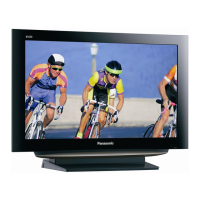


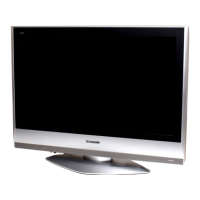
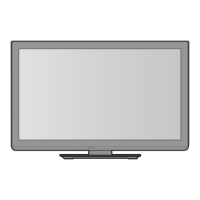
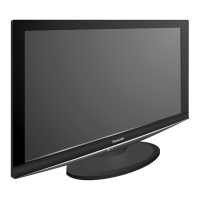
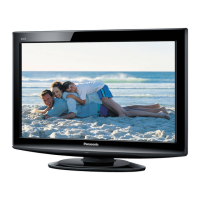
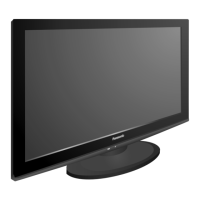
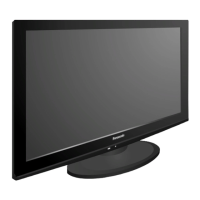

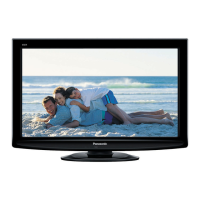
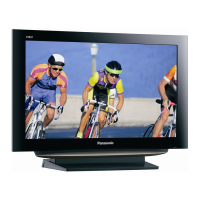
